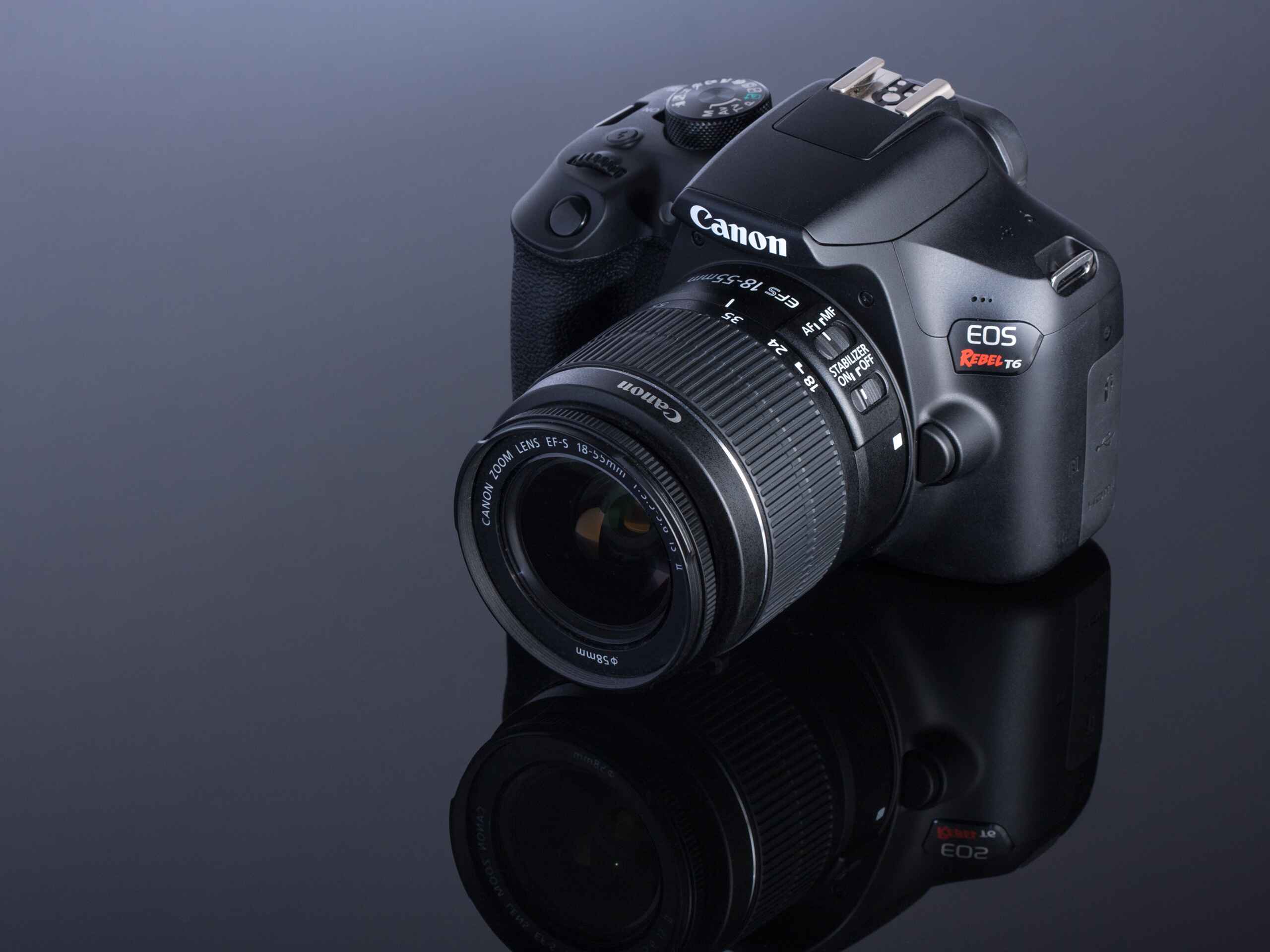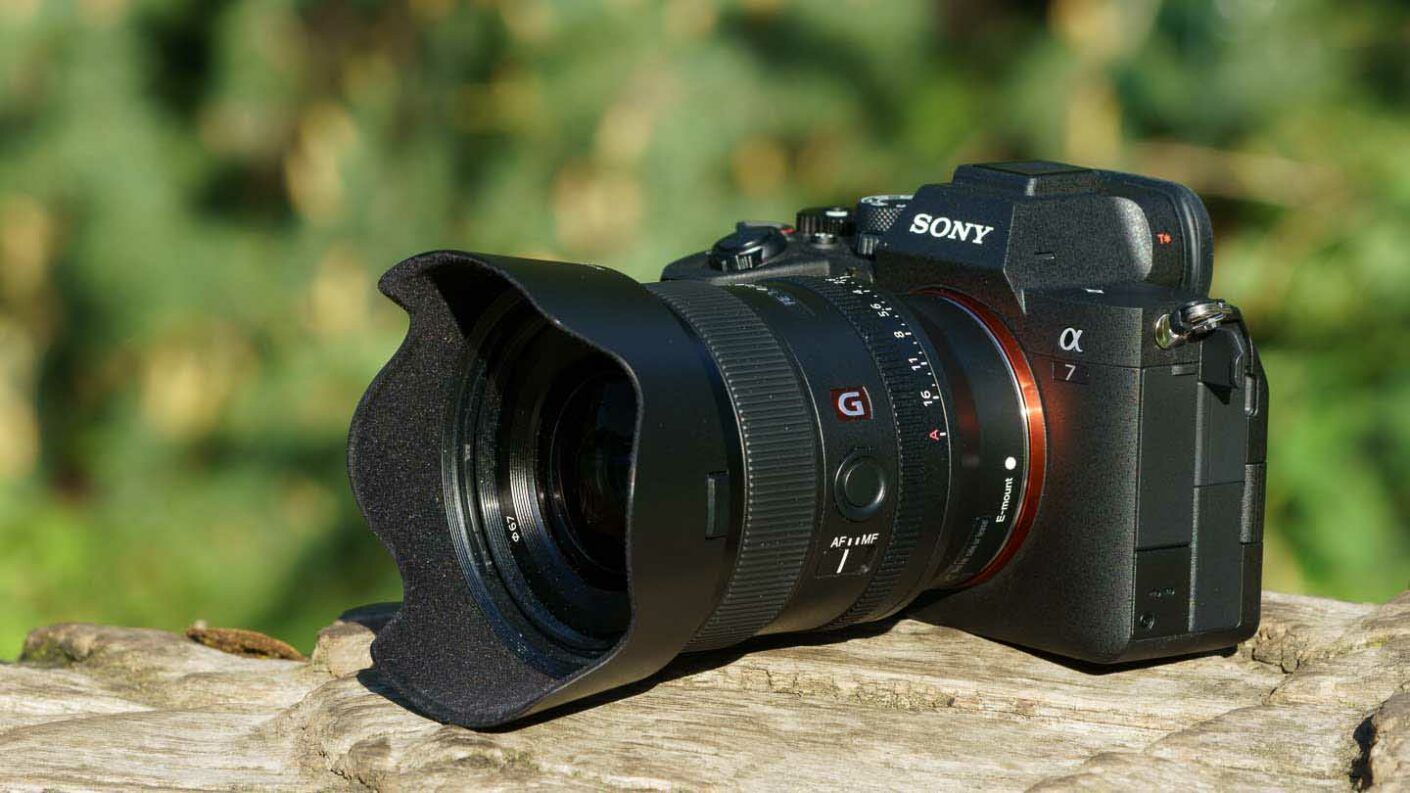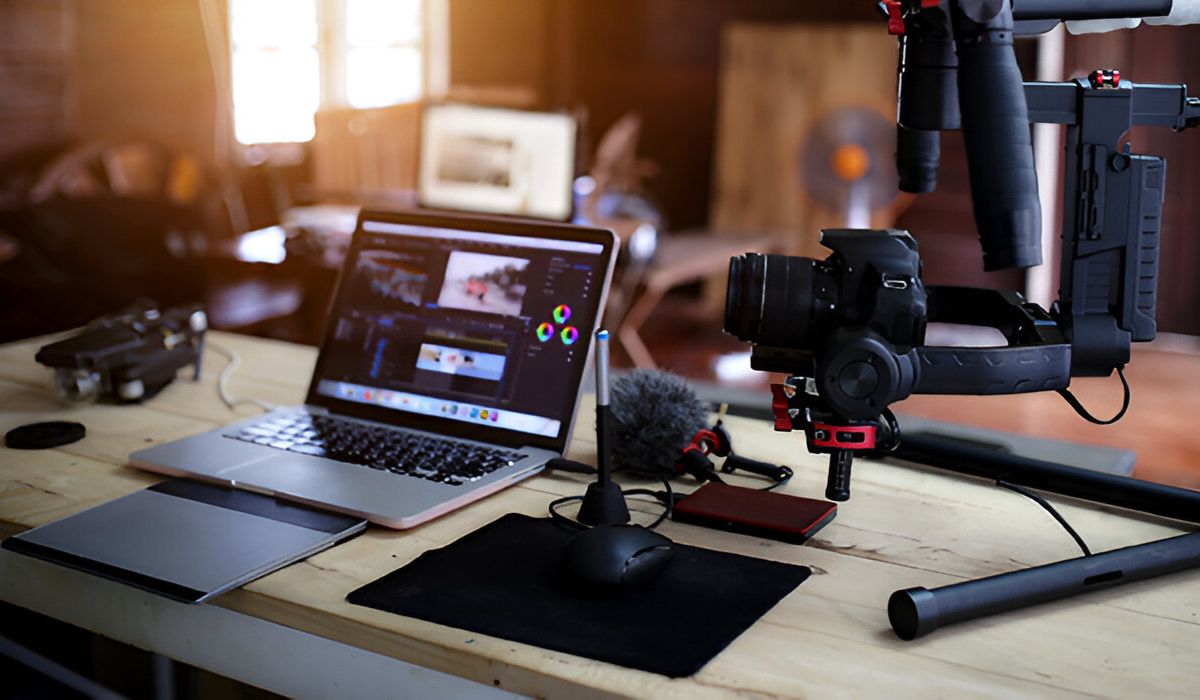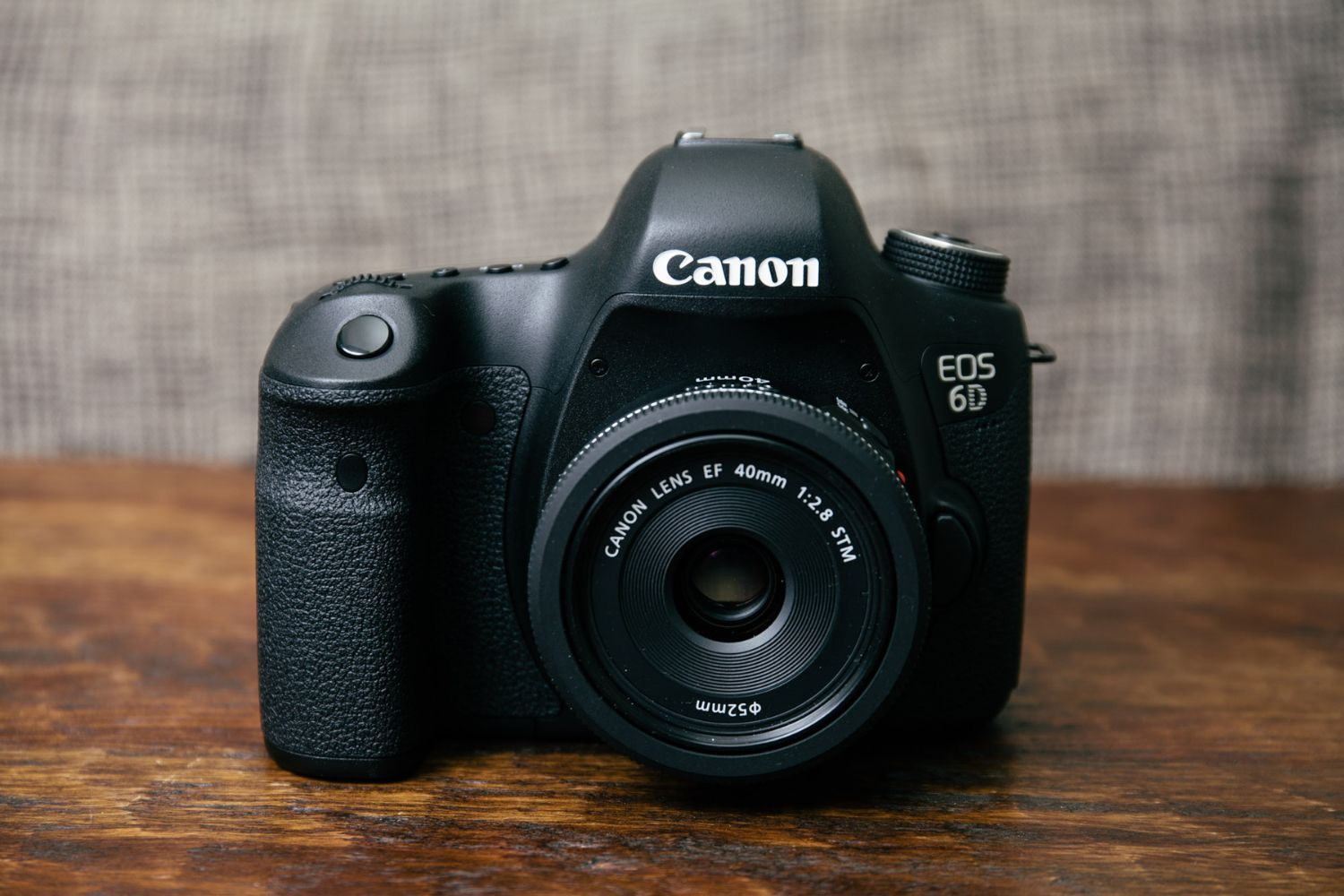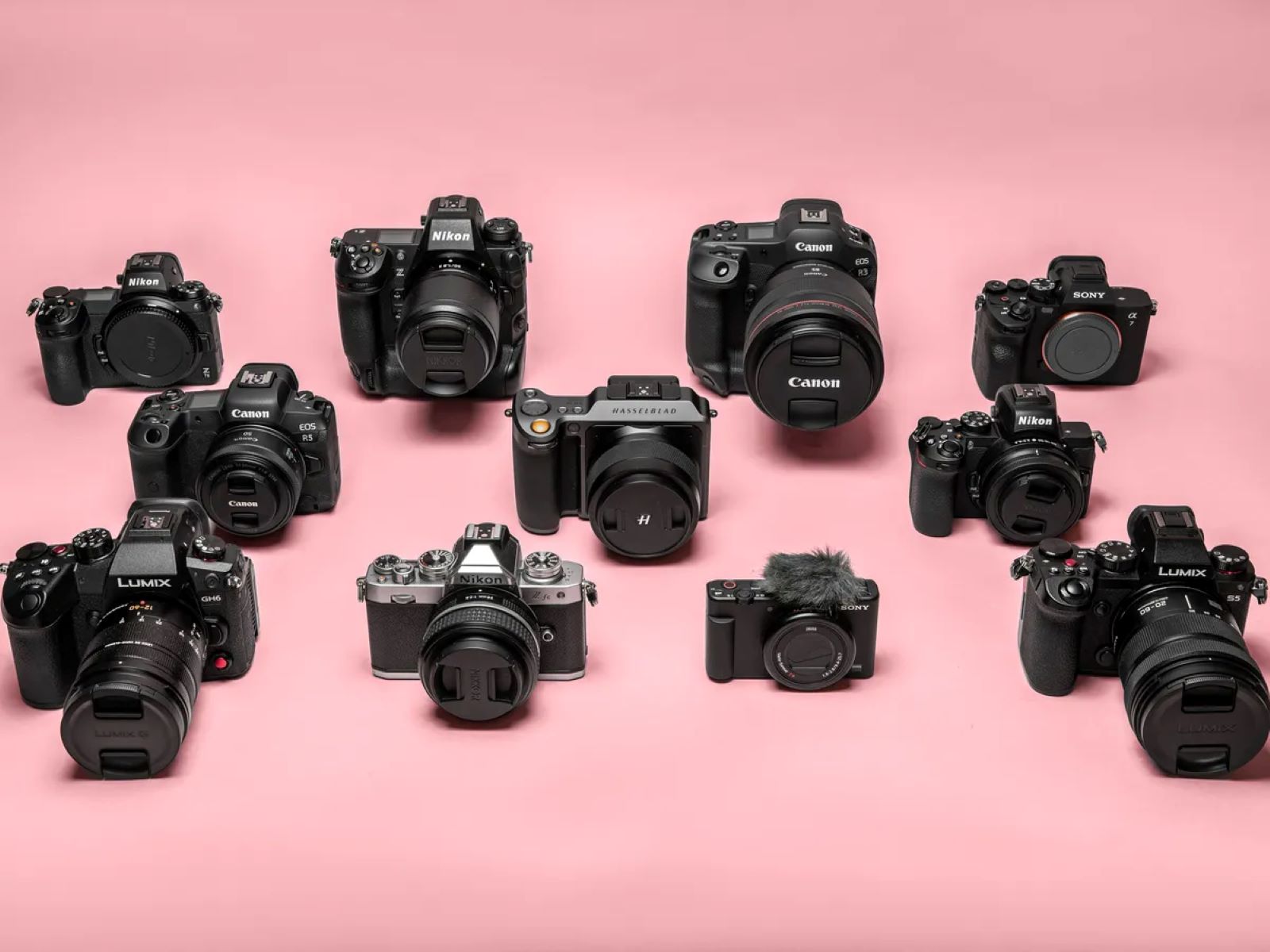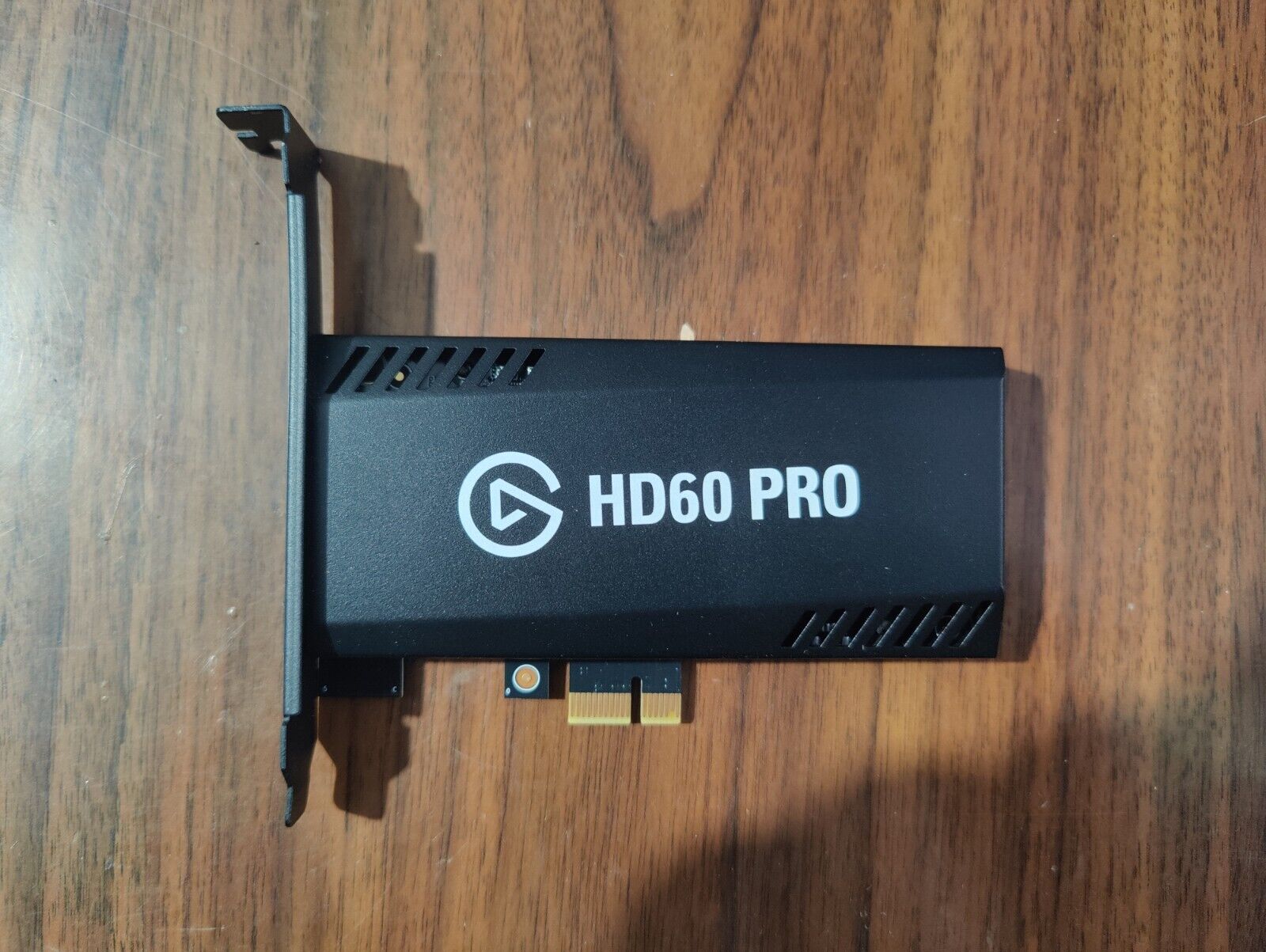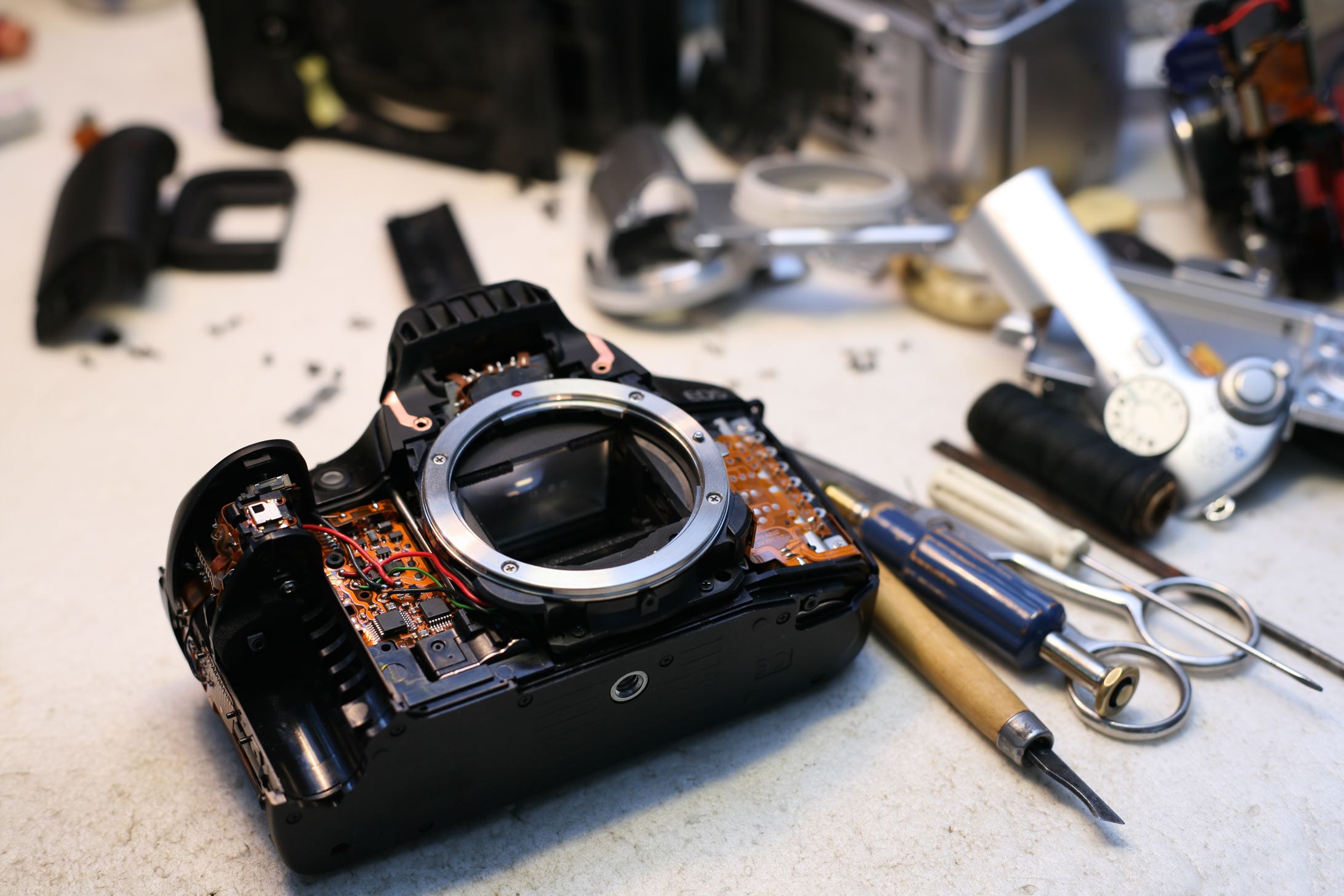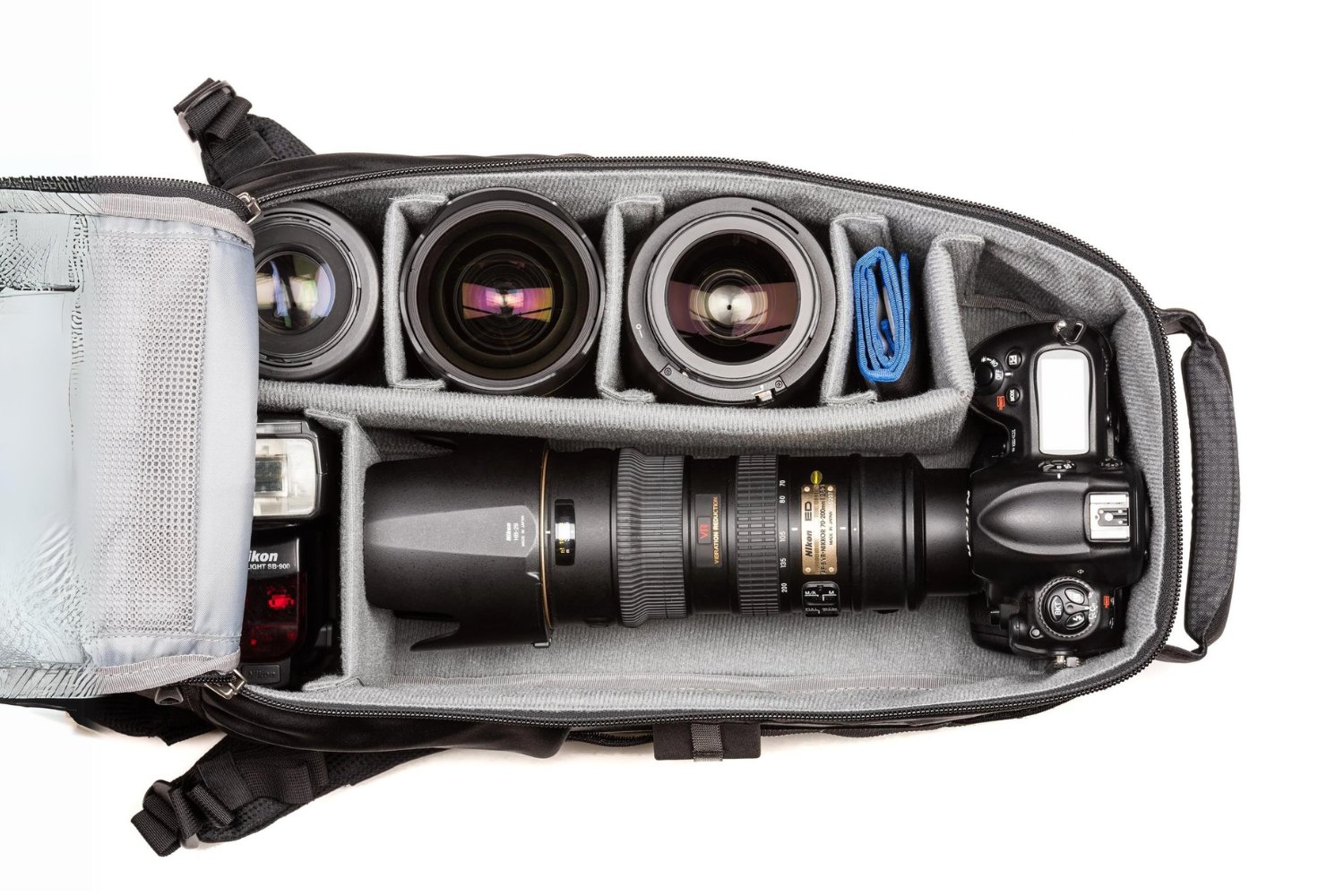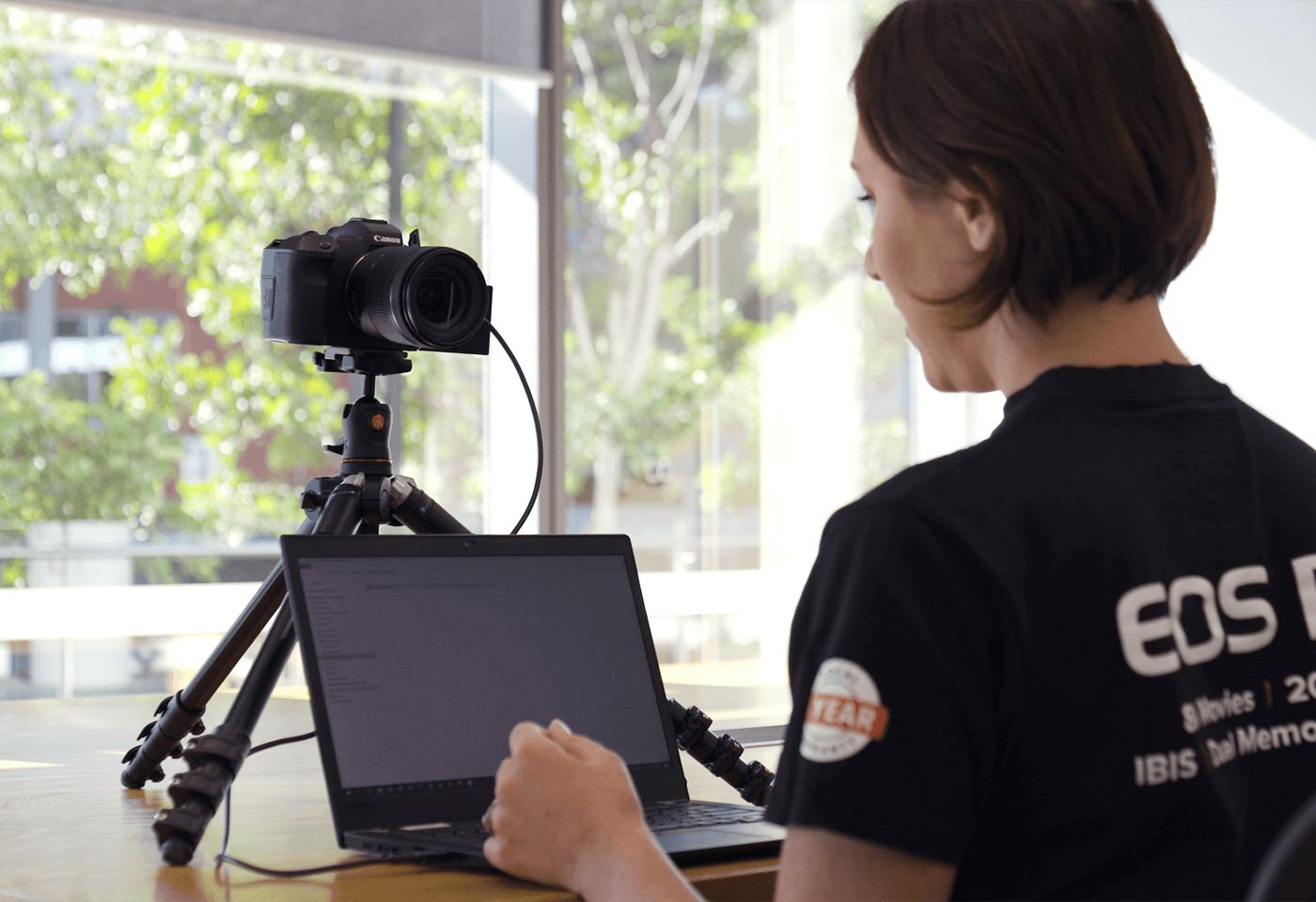Introduction
Welcome to the world of digital single-lens reflex (DSLR) cameras, where the pursuit of capturing stunning images and videos meets the art of advanced photography. Whether you are a professional photographer, an enthusiast, or a beginner looking to elevate your photography game, finding the best DSLR camera can be a game-changer for your creative journey. With a myriad of options available in the market, it’s essential to understand the key factors that make a DSLR camera stand out from the rest.
From exceptional image quality and versatile autofocus systems to impressive low-light performance and advanced video capabilities, DSLR cameras offer a wide range of features that cater to various photography needs. Additionally, factors such as size and weight, battery life, and price play pivotal roles in determining the best DSLR camera for your specific requirements.
In this comprehensive guide, we will delve into the essential aspects to consider when choosing the best DSLR camera, providing you with valuable insights to make an informed decision. By exploring the critical features and functionalities of DSLR cameras, you will gain a deeper understanding of what sets each model apart, ultimately guiding you towards selecting the perfect DSLR camera to unleash your creativity and capture unforgettable moments.
Image Quality
When it comes to DSLR cameras, image quality reigns supreme as a defining factor. The ability to capture breathtakingly sharp, detailed, and vibrant images is a hallmark of a top-tier DSLR camera. The quality of the images produced by a DSLR is influenced by several key components, including the sensor size, resolution, and the camera’s image processing capabilities.
DSLR cameras are equipped with larger sensors compared to their compact counterparts, allowing them to capture more light and produce images with superior clarity and dynamic range. The sensor size, typically measured in millimeters, directly impacts the camera’s ability to render fine details and handle challenging lighting conditions, making it a crucial consideration for photographers seeking uncompromising image quality.
Resolution, often expressed in megapixels, plays a vital role in determining the level of detail a DSLR camera can capture. Higher resolution sensors enable photographers to create large prints without sacrificing image sharpness, providing the flexibility to crop and recompose images without compromising quality.
Furthermore, the image processing engine of a DSLR camera significantly influences the final output. Advanced processing algorithms enhance color accuracy, reduce noise, and optimize image sharpness, resulting in images that truly reflect the photographer’s vision.
When evaluating the image quality of a DSLR camera, it’s essential to consider real-world performance in various shooting conditions. Assessing sample images taken in different environments, such as landscapes, portraits, and low-light settings, can provide valuable insights into the camera’s ability to deliver stunning results across diverse scenarios.
Ultimately, the best DSLR camera for image quality seamlessly combines cutting-edge sensor technology, high-resolution capabilities, and advanced image processing, empowering photographers to capture awe-inspiring images that exceed expectations.
Autofocus System
The autofocus system is a pivotal feature that distinguishes exceptional DSLR cameras, offering photographers the precision and speed required to capture fleeting moments with unparalleled clarity. A robust autofocus system is essential for achieving sharp focus, tracking moving subjects, and ensuring consistent performance across a wide range of shooting scenarios.
Modern DSLR cameras are equipped with advanced autofocus systems that employ a combination of phase-detection and contrast-detection technologies to achieve swift and accurate focus. Phase-detection autofocus, commonly utilized in DSLRs, utilizes dedicated autofocus sensors to measure the convergence of light rays, enabling the camera to swiftly determine the correct focus distance. This results in rapid and precise focusing, making it ideal for capturing fast-moving subjects, such as athletes in action or wildlife in motion.
Furthermore, the number and arrangement of autofocus points play a crucial role in the overall performance of the autofocus system. A higher number of autofocus points distributed across the frame allows for more precise subject tracking and enhanced compositional flexibility, empowering photographers to maintain focus on off-center subjects without compromising accuracy.
Additionally, the sensitivity and responsiveness of the autofocus system in low-light conditions are essential considerations for photographers who frequently work in challenging environments. DSLR cameras with advanced low-light autofocus capabilities excel in acquiring and maintaining focus in dimly lit settings, ensuring that photographers can confidently capture sharp images without being limited by ambient light levels.
For videographers, the autofocus system’s ability to smoothly and silently transition between subjects is equally crucial. DSLR cameras with advanced autofocus systems offer smooth and natural focus transitions, enhancing the overall quality of video recordings and expanding the creative possibilities for filmmakers.
In summary, a high-performance autofocus system is a hallmark of the best DSLR cameras, offering photographers and videographers the confidence to capture decisive moments with precision and finesse, regardless of the shooting conditions or subject matter.
Low Light Performance
The ability of a DSLR camera to deliver exceptional performance in low-light conditions is a critical consideration for photographers who frequently work in dimly lit environments or capture nighttime scenes. The low-light performance of a DSLR camera is influenced by several key factors, including sensor size, ISO range, noise reduction capabilities, and the effectiveness of the camera’s image stabilization system.
DSLR cameras with larger sensors, such as full-frame or APS-C sensors, inherently excel in low-light situations due to their enhanced light-gathering capabilities. The larger sensor size allows for improved signal-to-noise ratio, resulting in cleaner and more detailed images, even at higher ISO settings. Additionally, the dynamic range of larger sensors enables photographers to capture subtle details and tonal gradations in challenging lighting conditions, preserving the integrity of the scene.
An expansive ISO range is a defining feature of DSLR cameras renowned for their low-light performance. A wide ISO range empowers photographers to adjust the camera’s sensitivity to light, enabling them to capture compelling images in dimly lit environments without compromising image quality. The ability to achieve high ISO settings with minimal noise is a testament to a DSLR camera’s prowess in low-light photography, allowing photographers to push the boundaries of creativity without being hindered by technical limitations.
Furthermore, advanced noise reduction algorithms integrated into DSLR cameras play a crucial role in maintaining image quality when shooting at higher ISO settings. Effective noise reduction technology minimizes digital noise, preserving fine details and textures while producing clean and visually appealing images, even in challenging lighting conditions.
For handheld shooting in low light, the effectiveness of the camera’s image stabilization system is paramount. DSLR cameras equipped with in-body or lens-based image stabilization mechanisms enable photographers to capture sharp images at slower shutter speeds, compensating for camera shake and enhancing the overall stability of handheld shots in low-light environments.
Ultimately, the best DSLR cameras for low-light performance seamlessly combine advanced sensor technology, expansive ISO ranges, effective noise reduction capabilities, and reliable image stabilization systems, empowering photographers to push the boundaries of creativity and capture stunning images in the most challenging lighting conditions.
Video Capabilities
DSLR cameras have evolved to become versatile tools for not only still photography but also high-quality video production, offering an array of advanced features and capabilities that cater to the needs of videographers and content creators. When evaluating the video capabilities of a DSLR camera, several key factors come into play, including resolution, frame rates, video formats, autofocus performance, and audio recording options.
Resolution is a fundamental aspect of a DSLR camera’s video capabilities, with many modern models offering the ability to capture video in stunning 4K resolution. The high level of detail and clarity provided by 4K video enhances the visual impact of video content, making it an attractive feature for videographers seeking professional-grade output.
Frame rates play a crucial role in video production, allowing videographers to achieve different visual effects and styles. The ability to capture high frame rate footage, such as 60 frames per second (fps) or higher, enables smooth and detailed slow-motion sequences, adding a dynamic and cinematic quality to the video content.
Furthermore, the availability of diverse video formats, such as H.264, H.265, or professional-grade codecs like ProRes and RAW, expands the creative possibilities for videographers, offering flexibility in post-production workflows and ensuring optimal image quality and compression efficiency.
The autofocus performance during video recording is a significant consideration for DSLR cameras, with advanced autofocus systems offering smooth and accurate subject tracking, face detection, and touch-to-focus capabilities. Seamless and responsive autofocus enhances the overall quality of video content, providing videographers with the confidence to capture compelling footage with precise focus, whether shooting stationary subjects or dynamic scenes.
In addition to video quality, the audio recording capabilities of DSLR cameras contribute to the overall production value of video content. DSLR cameras equipped with built-in or external microphone options, audio level controls, and headphone jacks enable videographers to capture high-quality sound, ensuring that the audio component of their productions matches the visual excellence of their videos.
Ultimately, the best DSLR cameras for video production seamlessly integrate cutting-edge video features, advanced autofocus systems, and comprehensive audio recording options, empowering videographers to unleash their creativity and produce captivating video content with uncompromising quality and versatility.
Size and Weight
When selecting the best DSLR camera, the consideration of size and weight is pivotal, as it directly impacts the camera’s portability, handling, and overall suitability for various photography endeavors. DSLR cameras are available in a range of sizes and weights, catering to the diverse needs and preferences of photographers, from compact and lightweight models to robust and substantial bodies.
The size and weight of a DSLR camera play a significant role in its portability and ease of handling during extended shooting sessions. Compact and lightweight DSLR cameras are favored by photographers who prioritize mobility and versatility, making them ideal companions for travel, street photography, and on-the-go shooting experiences. These cameras offer a balance between performance and portability, allowing photographers to seamlessly navigate through diverse environments and capture spontaneous moments with agility.
On the other hand, larger and heavier DSLR bodies are often preferred by professionals and enthusiasts seeking robust build quality, ergonomic design, and enhanced stability when using larger lenses or accessories. The substantial grip and intuitive button layout of larger DSLR cameras contribute to a comfortable and secure handling experience, especially during extended shooting sessions or when working with telephoto lenses and professional-grade accessories.
Moreover, the size and weight of a DSLR camera directly influence its compatibility with a wide range of lenses and accessories, expanding the creative potential of photographers. Compact DSLR bodies offer compatibility with lightweight and portable lenses, making them well-suited for casual and everyday photography, while larger bodies provide the stability and support required for professional lenses and specialized equipment, catering to the demands of various photographic genres.
Photographers should consider their shooting style, intended applications, and personal preferences when evaluating the size and weight of a DSLR camera, ensuring that it aligns with their specific needs and complements their photographic vision.
In essence, the best DSLR camera in terms of size and weight strikes a harmonious balance between portability and performance, offering photographers the freedom to pursue their creative endeavors with a camera that seamlessly integrates into their workflow and empowers them to capture extraordinary images with comfort and confidence.
Battery Life
The battery life of a DSLR camera is a critical factor that directly influences the photographer’s shooting experience, endurance in the field, and overall reliability during extended photography sessions. DSLR cameras are powered by rechargeable lithium-ion batteries, and the longevity of a camera’s battery is influenced by various factors, including the capacity of the battery, power management features, and the camera’s operational efficiency.
The capacity of the camera’s battery plays a significant role in determining its endurance and the number of shots it can capture on a single charge. DSLR cameras with high-capacity batteries can sustain prolonged shooting sessions, making them ideal for photographers who frequently work in remote locations or situations where access to charging facilities may be limited. Additionally, the availability of spare batteries and external power sources further enhances the camera’s versatility and allows photographers to extend their shooting capabilities without interruption.
Efficient power management features integrated into DSLR cameras contribute to maximizing battery life and optimizing energy usage. Advanced power-saving modes, intelligent sleep functions, and customizable auto-power-off settings help conserve battery power when the camera is not in active use, ensuring that the camera remains operational for extended periods without unnecessary energy consumption.
Furthermore, the operational efficiency of the camera’s components, such as the image sensor, electronic viewfinder, and autofocus system, directly impacts the overall battery life. DSLR cameras with energy-efficient sensor designs, low-power electronic viewfinders, and optimized autofocus mechanisms can prolong battery longevity, allowing photographers to capture more images and videos on a single charge without compromising performance.
For photographers engaging in intensive shooting activities, such as sports photography or event coverage, the ability of a DSLR camera to sustain continuous shooting and maintain consistent performance throughout the day is a testament to its robust battery life. Cameras with extended battery life empower photographers to focus on capturing decisive moments without being encumbered by frequent battery changes or recharging intervals.
In summary, the best DSLR cameras for battery life seamlessly integrate high-capacity batteries, efficient power management features, and operational optimization, providing photographers with the endurance and reliability needed to pursue their creative vision and capture compelling images and videos across diverse shooting scenarios.
Price
When considering the purchase of a DSLR camera, the price plays a significant role in the decision-making process, as it directly impacts the accessibility, features, and overall value proposition of the camera. DSLR cameras are available across a wide price spectrum, offering options for photographers with varying budgets, skill levels, and specific requirements.
The price of a DSLR camera is reflective of its features, performance capabilities, build quality, and brand reputation. Entry-level DSLR cameras, positioned at a lower price point, provide an accessible entry into the world of digital photography, offering essential features, user-friendly interfaces, and the flexibility to expand and upgrade the camera system over time. These cameras are ideal for beginners, hobbyists, and enthusiasts seeking a cost-effective yet capable tool for learning and exploring the art of photography.
Mid-range DSLR cameras strike a balance between affordability and advanced features, catering to photographers who require a higher level of performance, image quality, and versatility. These cameras often incorporate advanced autofocus systems, enhanced low-light capabilities, and ergonomic designs, making them suitable for a wide range of photographic applications, from portrait and landscape photography to sports and wildlife shooting.
At the premium end of the price spectrum, professional-grade DSLR cameras offer uncompromising performance, rugged build quality, and an extensive array of features tailored to the demands of professional photographers and advanced enthusiasts. These high-end cameras boast exceptional image quality, robust weather-sealed construction, and advanced customization options, empowering photographers to achieve their creative vision with precision and confidence.
It’s important for photographers to assess the overall value proposition of a DSLR camera in relation to its price, considering factors such as the included accessories, lens compatibility, warranty coverage, and potential for future upgrades and expansion. Additionally, the long-term investment in a DSLR camera should be evaluated based on its durability, reliability, and the potential for growth as the photographer’s skills and creative pursuits evolve.
Ultimately, the best DSLR camera in terms of price aligns with the photographer’s budget, expectations, and long-term goals, offering a compelling combination of features, performance, and quality that represents a sound investment in their photographic journey.
Conclusion
Choosing the best DSLR camera involves a comprehensive evaluation of critical factors that collectively define the camera’s performance, versatility, and value. From exceptional image quality and advanced autofocus systems to impressive low-light performance and high-quality video capabilities, the ideal DSLR camera seamlessly integrates these attributes to cater to the diverse needs and creative aspirations of photographers and videographers.
When embarking on the quest for the perfect DSLR camera, it’s essential to consider the specific requirements and preferences that align with your photographic vision. Whether you prioritize portability and compactness for on-the-go shooting, seek uncompromising image quality and professional-grade features, or place emphasis on versatile video capabilities, the best DSLR camera is the one that resonates with your unique style and empowers you to capture extraordinary moments with confidence.
Furthermore, the enduring aspects of battery life, ergonomic design, and the overall value proposition in relation to the price contribute to the holistic assessment of a DSLR camera’s suitability for your creative endeavors. The seamless integration of these elements ensures that the chosen DSLR camera becomes an extension of your vision, enabling you to explore new horizons, push the boundaries of creativity, and capture compelling images and videos that resonate with your audience.
As you navigate the diverse landscape of DSLR cameras, remember that the best camera is not merely a tool, but a companion on your photographic journey. It should inspire and empower you, adapt to your evolving skills and aspirations, and serve as a reliable and versatile instrument that unlocks your creative potential.
Ultimately, the best DSLR camera is the one that ignites your passion for photography, elevates your craft, and becomes an indispensable partner in your pursuit of visual storytelling and artistic expression. Embrace the possibilities, explore the capabilities, and embark on a transformative journey with the DSLR camera that resonates with your vision and empowers you to capture the world in all its splendor.







